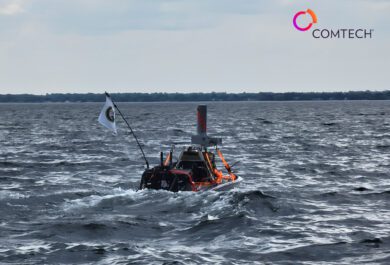We recently discussed the explosive next-generation 911 (NG911) market, and the potential it presents for our business as communities and service providers work to upgrade their public safety communications infrastructure.
When people think of emergency response, they usually do so with the iconic “911” number in mind, but there’s another growth driver emerging: 988.
988 is the newly-named suicide and crisis helpline that was originally established in 2005 as the National Suicide Prevention Lifeline. However, in 2022, the government passed the National Suicide Hotline Designation Act, redesignating the former ten-digit number to the current 988 code for 24/7 crisis care. The government has put more focus on mental health issues in recent years, and has increased crisis communications spending almost 20x from $24M to $432M to scale up crisis centers, improve response rates and ensure calls are routed to the correct call center.
While the need to increase 988 resources is important, a greater issue is still looming: call routing. When a call comes in to 988, it’s routed to a center with proximity to the caller’s area code. If someone is on vacation and initiates a 988 call, that call will be routed according to their phone number – potentially hundreds, if not thousands, of miles away from a caller’s actual location. Once a dispatcher answers that call, they will have to redirect it to the appropriate local point of contact, which can create costly delays in situations where every second matters. These inefficiencies in the 988 infrastructure will only amplify as the number of 988 calls continues to skyrocket. In fact, after 988 was established in July 2022, the helpline saw a 33% jump in call volumes the following year.
This has become such an important issue that last month, the FCC announced a proposal requiring 988 end points to deploy georouting solutions to better identify a caller’s location (such as by using neighboring cell towers, versus a caller’s area code), allowing counselors to react quickly to incoming calls while avoiding unnecessary use of other emergency services or law enforcement. At the same time, carriers must be able to maintain customer privacy requirements. This is precisely where Comtech comes in.
Comtech is uniquely positioned to meet the complex demands of 988. We’re already established as a trusted call handler, with multiple successful NG911 deployments. While 988 calls currently can’t be transferred to the 911 system, there is significant promise to bring these two services together – particularly piggy-backing 988 services on new NG911 infrastructure. Using ESInet solutions nascent in NG911, 988 calls could come from a variety of sources beyond cell phones – including VoIP or smart devices – and then get transferred to the correct crisis center based on where the caller is reaching out from. With less guesswork and faster response times, these location and routing services will also allow crisis centers to absorb increased call volumes. This is a perfect application for our expertise, and end-to-end platform.
The opportunities for our business are clear. With pressure to modernize the 988 lifeline country-wide, it’s a communications sector with growth potential of a roughly 20% CAGR, according to our internal analysis. In fact, over half of US states have passed legislation to address 988 implementation policies – which is to say that these opportunities already exist, and will continue to grow.
So much of the success of an emergency response, whether someone is in physical or mental distress, boils down to how quickly the call can get to the right person. At Comtech, we pride ourselves on making that process work better and playing our role in getting people the help they need when it matters most. We look forward to applying our NG911 track record and technology to opportunities in the 988 space to make this lifeline more accessible and efficient in the future.
###
Forward-Looking Statements
Certain information in this blog post contains statements that are forward-looking in nature and involve certain significant risks and uncertainties. Actual results and performance could differ materially from such forward-looking information. The Company’s Securities and Exchange Commission filings identify many such risks and uncertainties. Any forward-looking information in this press release is qualified in its entirety by the risks and uncertainties described in such Securities and Exchange Commission filings.


